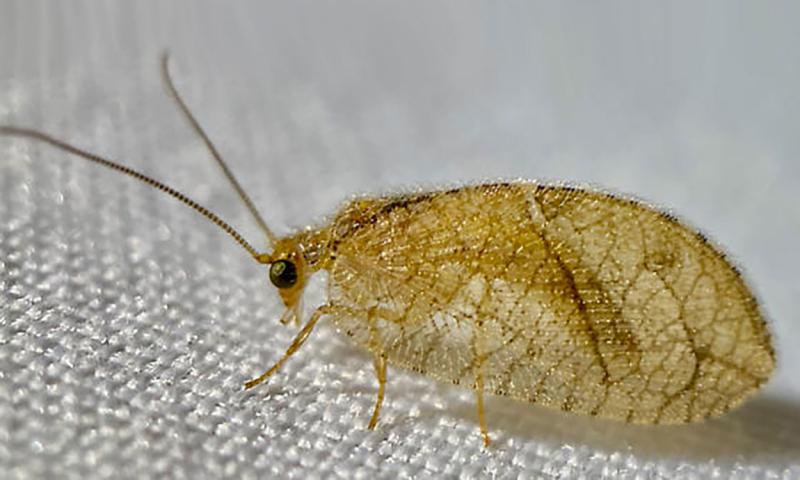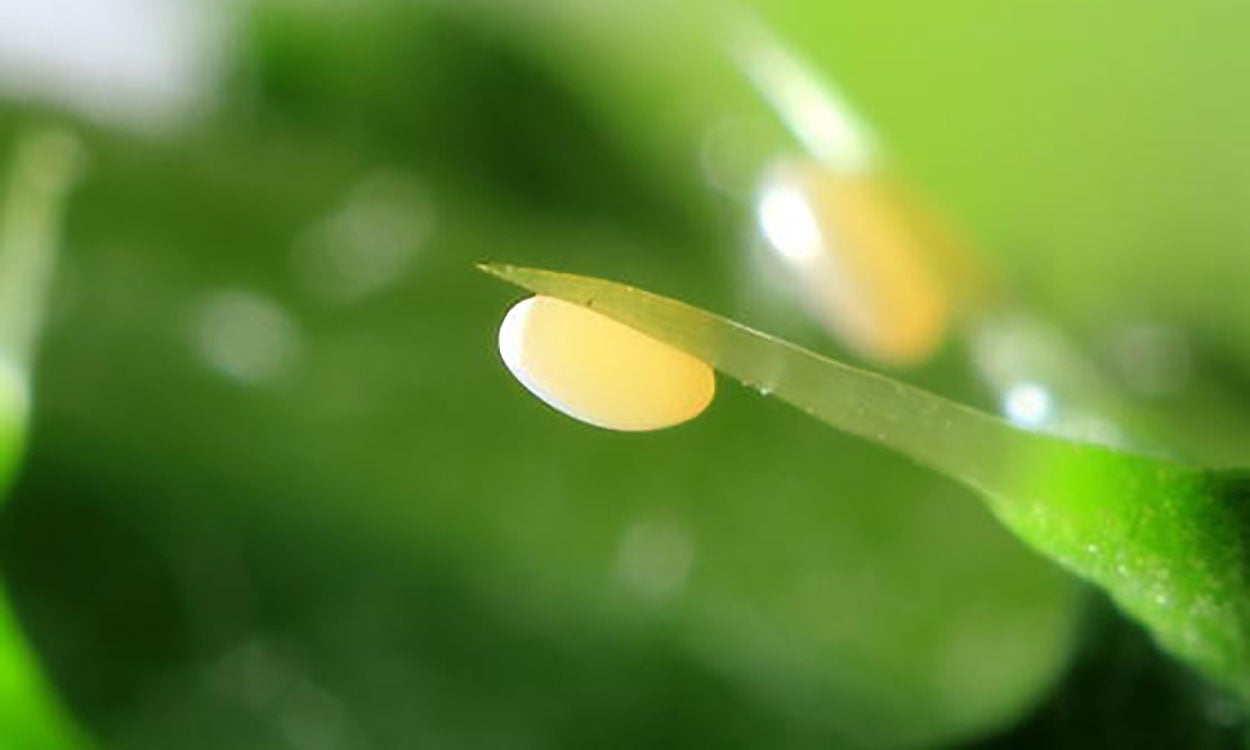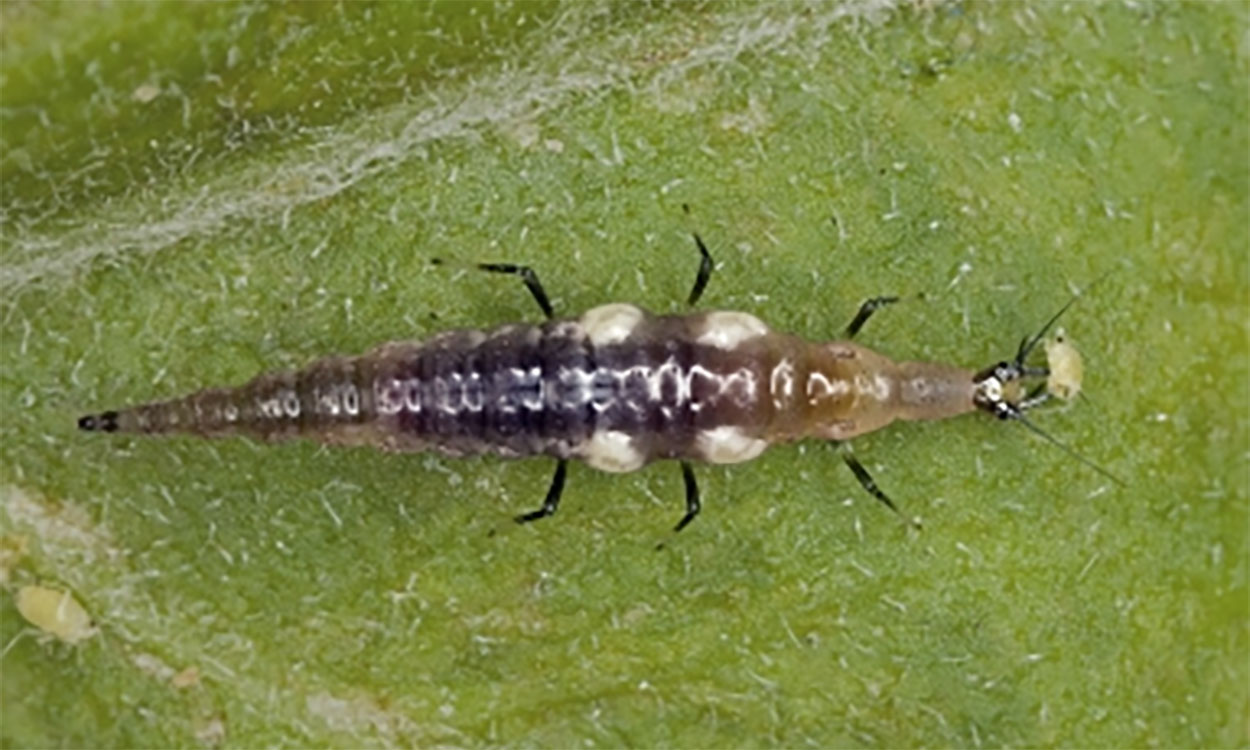
Written with contributions by Shelby Pritchard, former SDSU Extension Pest Management Specialist.
Originally Submitted: June 24, 2022
With so many insect pests causing concern for both gardeners and farmers, it’s important to know which ones are on our side. In this article we will focus on the brown lacewing (Hemerobiidae) and the beneficial role it plays within the landscape. Brown lacewings may be smaller and less common than green lacewings, but that doesn’t make them any less important as biocontrol agents. Both larvae and adults are important insect predators, especially towards aphids, and their presence should be encouraged.
Brown lacewings belong to the family Hemerobiidae within the order Neuroptera and have around 60 species in North America. They undergo complete metamorphosis meaning that they have four life stages (i.e., egg, larva, pupae, and adult).
Brown Lacewing Identification
Egg

Brown lacewing eggs are around 1/25 of an inch in length and are oblong in shape. They can range in color from creamy white to pale yellow to pinkish gray and can commonly be found near colonies of prey, like aphids (Figure 1).
Larva

Brown lacewing larvae are approximately 1/3 of an inch or less in length and resemble tiny alligators. Larvae have elongated bodies that taper off towards both ends. They are grayish brown with white spots along the sides of the body. They have distinct black pointy legs and small, sickle-shaped mouthparts (Figure 2).
Pupa

Brown lacewing pupae can be found on foliage in woven cocoons. The cocoons are thin, and pupae can be seen inside of them (Figure 3).
Adult

Brown lacewing adults range in size from 1/5 to 2/5 of an inch, depending on the species, and vary in color from brown to gray. Both body and wings are covered in hair. They have two pairs of semi-translucent, net-like wings with heavy venation that fold over the body like a tent when at rest. Adults have long, slender antennae, large, bulbous eyes and chewing mouthparts (Figure 4).
Life Cycle

Once temperatures warm up, brown lacewing adults will begin to emerge and will live for several months. During this time, they will mate, lay several hundred eggs, and consume soft-bodied insects (i.e., aphids, mites, mealybugs, caterpillars). Brown lacewing eggs are laid singly, or in small groups, directly on plant material and only take a few days to hatch. Larvae undergo three growth stages (instars), with the first one being the most active. Brown lacewing larvae prey on the same soft-bodied insects as the adults but consume aphids at a higher rate (Figure 5). Once the larvae are mature, they will pupate on foliage, typically near sources of food. The pupae are protected inside a silk-like, loosely woven cocoon. In South Dakota, brown lacewings usually overwinter as larva or pupa, have multiple generations per year and can be found in gardens, agricultural crop fields and natural landscapes with trees and shrubs.
Management
Brown lacewings are considered important biocontrol agents and, therefore, do not need to be managed. Some species are even bred commercially and used in greenhouses, gardens and other spaces to control pests. However, even with proper habitat and food availability, many beneficial insects are struggling due to the use of insecticides. Before using any type of chemical, read the label and only use them as the absolute last resort.


